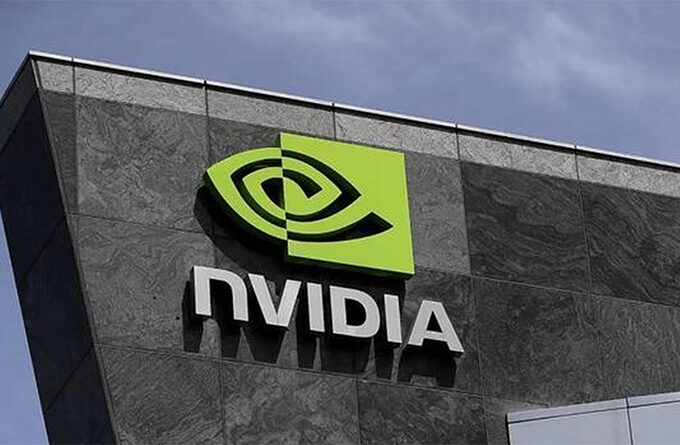Against the backdrop of growing enthusiasm for electric vehicles (EVs) among European consumers and the increasing market penetration, a company once seen as the industry leader has unexpectedly fallen into a slump—Tesla. This company, which once dominated the EV market with disruptive innovation and strong sales, has recently encountered a stunning decline in new car registrations in the European Union (EU). Data shows that in May of this year, Tesla’s new car registrations in the EU dropped by a significant 40.5% year-on-year, marking its fifth consecutive month of sales decline in this key market.
This stands in stark contrast to the overall robust growth of the European automotive market. According to the latest data from the European Automobile Manufacturers Association, total car sales in the EU grew by 1.9%, reaching 1.11 million units. Of particular note is the 27.2% year-on-year growth in the battery electric vehicle (BEV) segment, which reached a total of 193,493 units. This data not only highlights the huge potential of the electric vehicle market but also underscores Tesla’s absence and disappointment in this growth surge. From the data, in May, Tesla delivered 8,729 vehicles to the EU, while the same period last year saw 14,700 units. Meanwhile, its competitor BYD’s registration numbers in Europe have almost reached 7,200 units, nearly matching Tesla’s, but with a triple-digit growth rate. Tesla seems to have fallen into a product cycle gap, while its competitors are rapidly eating into its market share with more flexible product strategies and lower cost advantages.
Why Did Tesla’s Sales Plunge?
“Telsa’s predicament is not a short-term fluctuation but rather a reflection of structural changes,” pointed out a senior automotive analyst from a major European investment bank. “Tesla’s product line is aging. Models like the Model 3 and Model Y have been on the market for years, while competitors such as BMW, Mercedes-Benz, and Volkswagen have adjusted their strategies with diversified electric and hybrid models.” For example, BMW’s registrations grew by 8.1% in May, Mercedes-Benz grew by 3.9%, and Volkswagen Group grew by 4.8%. These traditional carmakers have not only caught up technologically but also leverage deep brand recognition and a well-established after-sales service network.
At the same time, the rise of Chinese brands has become another major threat to Tesla in the European market. Two years ago, BYD’s sales data in the EU was nearly negligible, but now its market share has approached 5.9%, with registrations growing by 397% year-on-year. MG (a brand under SAIC Motor) also saw a 30% increase in registrations. These Chinese brands have quickly established themselves in Europe’s price-sensitive EV industry market with more attractive features and lower post-subsidy prices (with entry-level models priced 8,000 to 12,000 euros lower than Tesla’s).
Germany has already removed incentives for electric vehicles priced over 45,000 euros, while France’s “ecological subsidy” plan penalizes Chinese-made vehicles like the Model 3. These policy changes have directly weakened Tesla’s price competitiveness, especially in subsidy-sensitive markets. Additionally, the unresolved tariff negotiations between the EU and China add further uncertainty to the market. If the EU imposes tariffs on Chinese EVs, it could indirectly benefit Tesla. However, it might also trigger retaliatory measures from China, potentially affecting Tesla’s supply chain. Tesla’s Full Self-Driving (FSD) capability is still pending regulatory approval in Germany, further limiting its competitiveness in the high-end market.
Why Have Competitors Been Able to Grow?
Volkswagen Group’s registrations in the EU increased by 1.6% in May, showing strong market competitiveness. BMW grew by 8.1%, Mercedes-Benz grew by 3.9%, and Volkswagen Group grew by 4.8%. These traditional car manufacturers not only caught up technologically but also benefit from their deep brand recognition and extensive after-sales service networks. Traditional automakers have adjusted their strategies with diversified electric and hybrid products, leveraging their brand recognition and established service infrastructure.
The rise of Chinese brands has also been notable. BYD’s market share in the EU has reached approximately 5.9%, with a year-on-year growth of 397%. MG’s registrations have grown by 30%. These Chinese brands have quickly gained a foothold in Europe’s price-sensitive EV market, aided by more attractive features and lower post-subsidy prices.
Moreover, the increasing variety of electric vehicle products from European automakers, along with lower-priced offerings from major Chinese manufacturers like SAIC, has led to fierce competition for Tesla. Public opposition to Tesla’s CEO Elon Musk may also have contributed to the brand’s weak sales in the EU, as Tesla faced consumer boycotts due to Musk’s political stance.

What Does the Future Hold for Tesla?
The decline in sales directly threatens Tesla’s financial health. The capacity of its Berlin Gigafactory is severely insufficient, leading to ineffective cost distribution. Industry experts even estimate that the current production shortage adds an unabsorbed indirect cost of $450 to $500 per vehicle. This cost pressure further squeezes Tesla’s gross margins, and the price-cutting strategy it implemented to capture market share (such as reducing the price of Model Y by 2,000 euros in February) has shown diminishing returns. In major markets like Germany and France, the price cuts only resulted in an increase of around 900 units in sales. “Tesla’s price elasticity seems to be weakening,” said an automotive investment expert. “Every percentage point drop in Berlin factory utilization directly affects the gross margin, and these margins have already been under pressure due to the previous price cuts.”
According to current trends, Tesla’s car gross margin (excluding regulatory credits) may shrink to around 14.8% in 2025, about 120 basis points lower than the market’s expectations. This will lead to an earnings per share (EPS) of approximately $1.83, 18% lower than analysts’ forecasts. An even worse scenario is that Tesla’s regulatory credit income, a high-margin revenue source, also faces the risk of depletion. European manufacturers are meeting their CO2 fleet targets with their own electric and hybrid products, reducing the need to buy credits from Tesla. Industry analysts estimate that this revenue stream, expected to reach $900 million in 2024, will be halved this year.
For investors, Tesla’s struggles in the European market have raised doubts about the company’s short-term growth trajectory and valuation multiples. Currently, the market still assumes a rebound in European sales in the second half of the year. However, the performance data from May has increasingly undermined this assumption. “The market has not fully absorbed what’s happening in Europe,” warned a senior automotive analyst. “Tesla’s current 65x P/E ratio assumes an increasingly difficult-to-justify growth story, given the competitive dynamics we are seeing.” According to current trends, Tesla’s EU revenue share may decrease to 9% in 2025, down by 2 percentage points from 2024.
In the coming months, Tesla’s performance in Europe will depend on several key catalysts: the second-quarter delivery report (July 2): If EU sales exceed 55,000 units, it may indicate market stabilization. If it falls below 50,000 units, it will confirm the worsening trend. The EU-China tariff negotiations (October): A compromise could benefit Tesla, but the removal of tariffs could spark more intense price competition. Germany FSD approval (2026): If approved, it could bring an additional 5,000 euros per car for Tesla.
Tesla’s struggles in the EU are not coincidental but the result of multiple factors, including an outdated product cycle, intensifying competition, financial pressure, policy changes, and brand perception. For investors, the current 65x P/E ratio can no longer support Tesla’s valuation logic, especially with a compound annual growth rate (CAGR) of deliveries at just 12% and a profit margin of under 15%. In the future, Tesla’s path in Europe will require more than just incremental improvements. If it cannot accelerate its mass-market vehicle plans or rapidly expand its European product lineup, the company may face a continuous decline in market share in one of the world’s most important EV markets. Investors should factor this reality into their valuation models and reconsider the logic of investing in Tesla.












